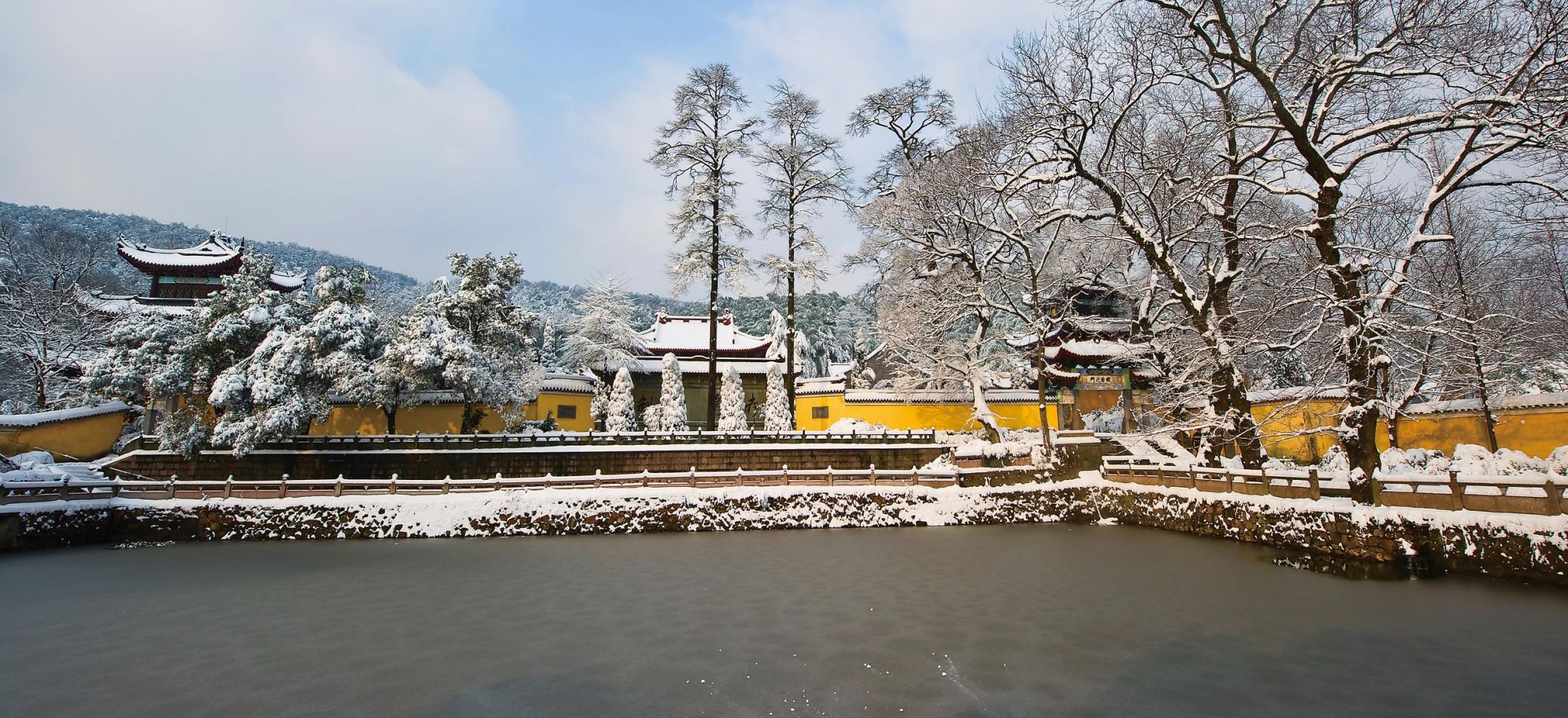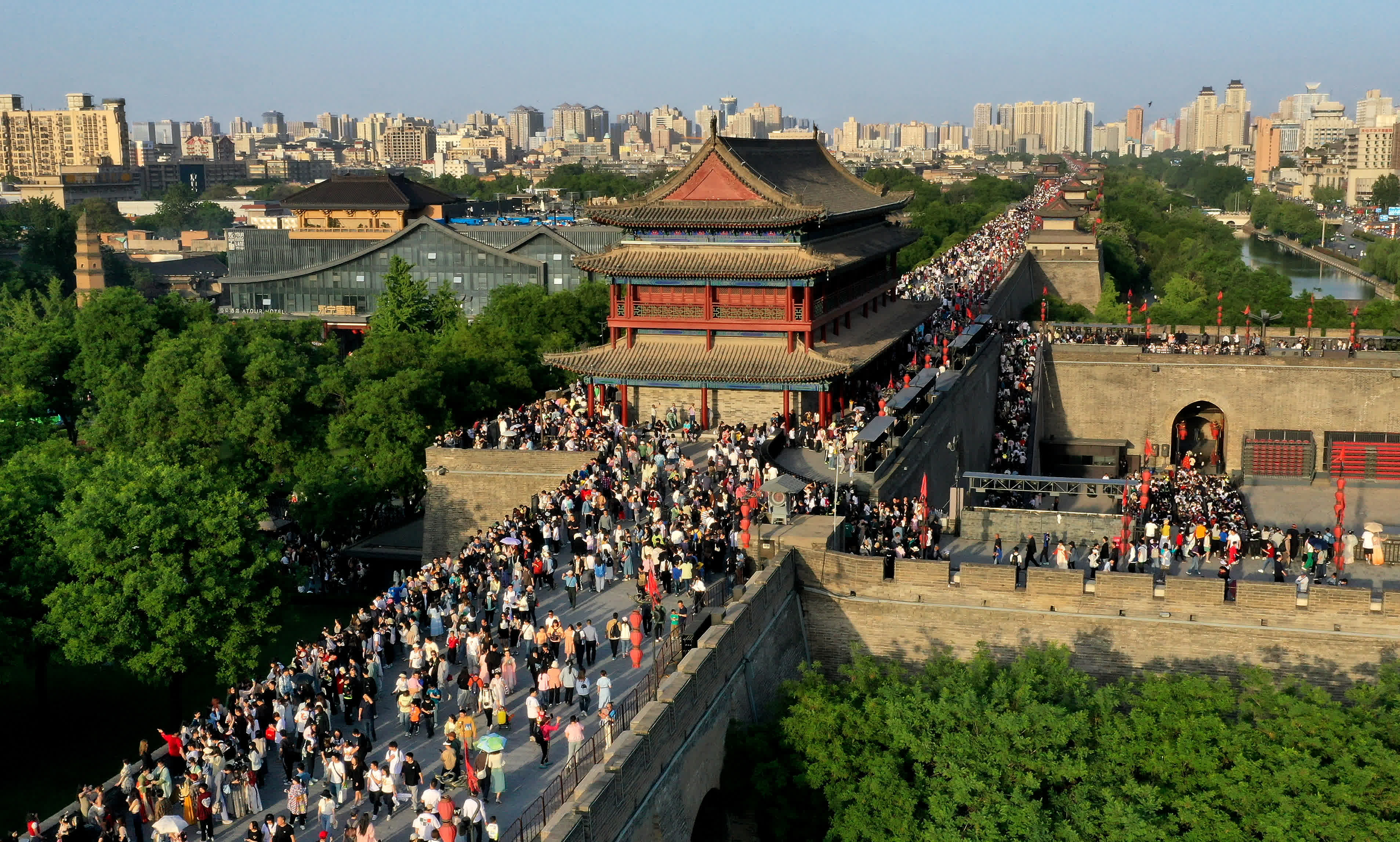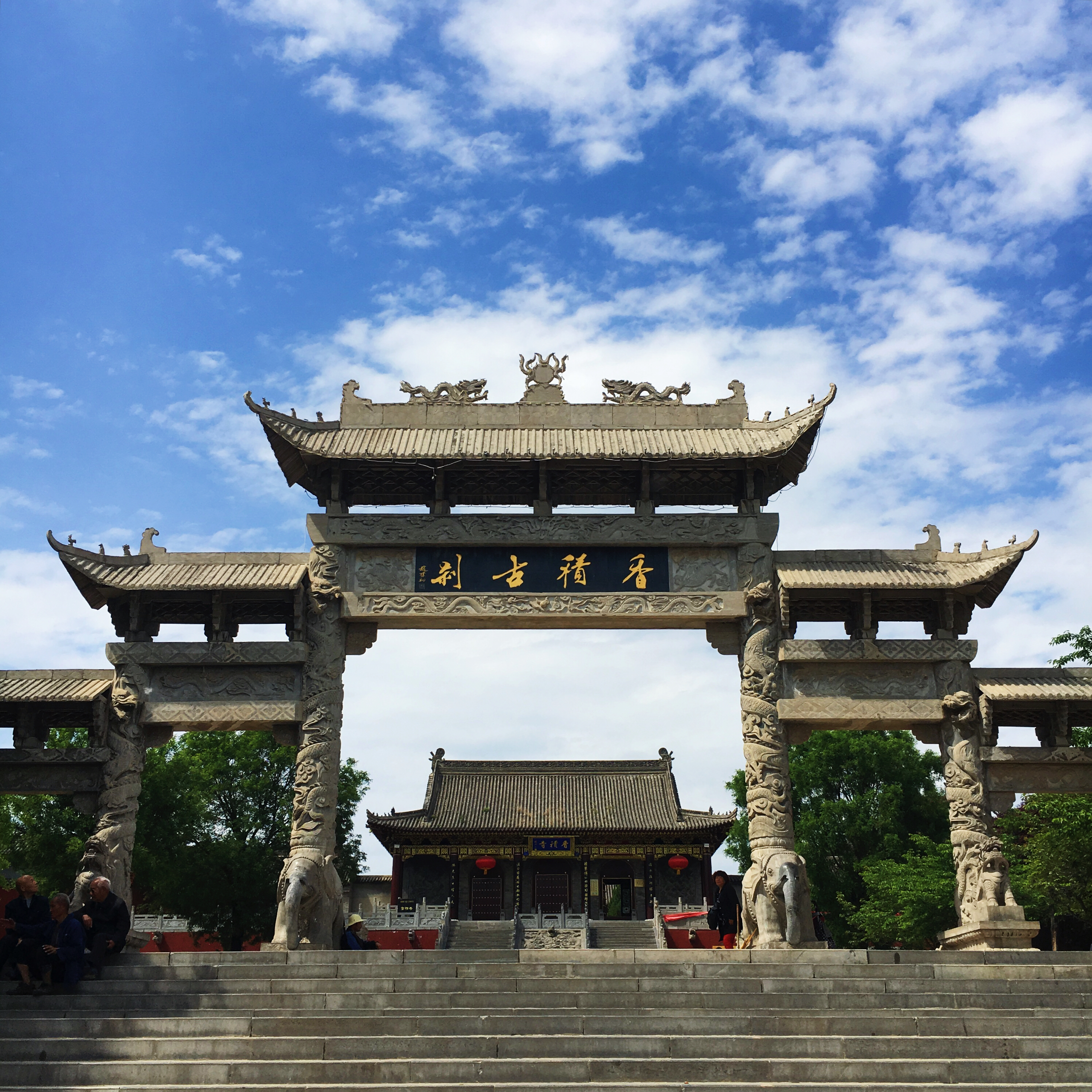
Deutsch-Chinesische Enzyklopädie, 德汉百科
 History
History


 Anhui Sheng-AH
Anhui Sheng-AH

 History
History
 H 1000 - 500 BC
H 1000 - 500 BC

 History
History
 I 500 - 0 BC
I 500 - 0 BC
 Jiangsu Sheng-JS
Jiangsu Sheng-JS
 Shanghai Shi-SH
Shanghai Shi-SH
 Zhejiang Sheng-ZJ
Zhejiang Sheng-ZJ
Das so genannte Wu (chinesisch 吳 / 吴, Pinyin Wú) war ein mächtiger, halbbarbarischer Staat in der Westlichen Zhou-Dynastie, Zeit der Frühlings- und Herbstannalen und Zeit der Streitenden Reiche an der Seeküste in der Gegend des unteren Jangtsekiangs, nördlich des Staates Yue.
Er wurde 473 v. Chr. von Yue erobert.
呉(ご、拼音:wú、紀元前585年頃 - 紀元前473年)は、中国の春秋時代に存在した君国の一つ。現在の蘇州周辺を支配した。君主の姓は姫。元の国号は句呉(こうご、くご)。 勾呉の表記もなされる。
中国の周王朝の祖、古公亶父の長子の太伯(泰伯)が、次弟の虞仲(呉仲・仲雍)と千余家の人々と共に建てた国である。虞仲の子孫である寿夢が国名を「句呉」から「呉」に改めた。 紀元前12世紀から紀元前473年夫差王まで続き、越王の勾践により滅ぼされた。 国姓は姫(き)。
Wu (Chinese: 吳; Old Chinese: *ŋʷˤa) was one of the states during the Western Zhou Dynasty and the Spring and Autumn period. It was also known as Gouwu (勾吳) or Gongwu (工吳) from the pronunciation of the local language.
Wu was located at the mouth of the Yangtze River east of the State of Chu. Its first capital was at Meili (probably in modern Wuxi) and was later moved to Gusu (modern central Suzhou) and then Helu City (the old town of present-day Suzhou).
Le Wu (吳) était un État chinois lors de la période des Printemps et des Automnes. Le royaume s'étendait autour de l'embouchure du Yangzi Jiang, alors appelé Fleuve Bleu, à l'est du royaume de Chu. Considéré comme un État semi-barbare par les historiens de la Chine ancienne, sa capitale était Suzhou.
Wu (吳) era uno Stato dell'antica Cina nel periodo delle primavere e degli autunni. Era situato a cavallo dell'imbocco del fiume Yangtze (Chang Jiang) ad est dello stato di Chu. Considerato dagli antichi storici cinesi uno Stato semi-barbarico, la sua capitale era Suzhou.
Secondo il famoso storico Sima Qian, i reggenti di Wu si vantavano di discendere da Taibo, lo zio anziano del re Wen di Zhou. Rendendosi conto che suo fratello minore, Jili, era più saggio di lui e meritava di ereditare il trono, Taibo sarebbe fuggito a Wu e vi si sarebbe stabilito. Tre generazioni più tardi, re Wu di Zhou sconfisse l'ultimo imperatore Yin, ed infeudatò i discendenti di Taibo nel regno di Wu.
Lo Stato di Jin favorì l'ascesa al potere di Wu come utile alleato contro lo Stato di Chu. Nel 584 a.C., Wu si ribellò contro lo Stato di Chu; l'iniziativa ebbe luogo su ispirazione di Wuchen, un ministro dello Stato di Jin che aveva defezionato da Chu.
In seguito, Wu sarebbe stato una costante minaccia per lo Stato di Chu sul suo versante sudorientale, fino alla sua scomparsa. Wu cercò di accattivarsi con le lusinghe relazioni amichevoli con i vassalli di Chu nella regione del fiume Yangtze, per indebolire il sistema di alleanze di Chu. Nel 506 a.C., Wu lanciò un attacco a sorpresa e occupò la capitale di Chu. Dopodiché, Wu fu per un breve periodo la nazione più potente, e si volse ad altre campagne, sconfiggendo lo stato di Qi nel 484 a.C.
Ironicamente, in seguito Wu fu minacciato da uno Stato appena sorto a sud, lo stato di Yue; lo Stato di Chu aiutò l'ascesa al potere di Yue per contrastare Wu. Sebbene Wu riportasse un'importante vittoria contro Yue nel 494 a.C., non riuscì a soggiogare completamente Yue, in parte perché quest'ultimo aveva corrotto un importante ministro di Wu. Mentre lo Stato di Wu era impegnato in una campagna militare nel nord, Yue lanciò un attacco a sorpresa contro Wu nel 482 a.C. conquistandone la capitale. Infine, lo Stato di Yue conquistò Wu nel 473 a.C.
I capi di Yue e Wu erano re, non duchi, perché erano considerati stati "barbarici" e non fecero richiesta alla corte nominale degli Zhou per ottenere il titolo.
Sia il regno di Wu che quello di Yue erano maestri nella metallurgia, fabbricando eccellenti spade, con incisi messaggi, motivi geometrici e intarsi in oro o argento. Tra gli esempi sono da citare la punta di lancia di re Fuchai e la spada del principe Guang (il futuro re Helu di Wu).
El siguiente artículo trata sobre el estado de Wu del período de los Reinos Combatientes. Para el estado fundado por Sun Quan en el período de los Tres Reinos ver Wu (reino).
El Estado de Wú (en chino: 吴国, pinyin: Wú Guó), también conocido como Gou Wu (勾吴) o Gong Wu (工吴 o 攻吾) fue uno de los estados vasallos durante la dinastía Zhou occidental y el periodo de Primaveras y Otoños.
El Estado de Wú se encontraba en la desembocadura del río Yangtze al este del Estado Chu. Considerado un estado de semi-bárbaros por los antiguos historiadores chinos, su capital fue Gusu (姑苏), también conocida como Wu (吴), hoy Suzhou. Los gobernantes del Estado de Wu tenían el apellido Ji (姬), el mismo que la familia real Zhou.
У (кит. трад. 吳, упр. 吴, пиньинь: Wú, тж. 干; вьетн. Ngô quốc, Нго) — удельное царство эпохи Весны и Осени (Период Чуньцю) в древнем Китае. Располагалось в нижнем течении реки Янцзы (с центром в совр. Чжэцзян). Археология свидетельствует, что местное население имело общее происхождение с народом царства Юэ, то есть было юэсским.


 Architecture
Architecture

 Architecture
Architecture
 Brick Gothic architecture
Brick Gothic architecture

 Brandenburg
Brandenburg

 History
History

 History
History
 L 1000 - 1500 AD
L 1000 - 1500 AD

 Religion
Religion

 Vacation and Travel
Vacation and Travel


 Architecture
Architecture
 Gothic architecture
Gothic architecture

 History
History
 L 1000 - 1500 AD
L 1000 - 1500 AD

 North Rhine-Westphalia
North Rhine-Westphalia

 Religion
Religion

 Vacation and Travel
Vacation and Travel



 西安市,古称长安、京兆、镐京,位于中华人民共和国中部,紧邻中华人民共和国几何中心,现为国家中心城市、陕西省省会,是陕西省的政治、经济、文化、交通、医疗、教育中心[3][4][5][6]。西安拥有3000余年的文明史、建城史和1077年的建都史,历史上曾有包括周、秦、汉、隋、唐等在内的共13个中原朝代在此建都,也是汉唐时期丝绸之路的起点。西安是中国历史上强盛的统一王朝建都最多的古都[7],在西安定都的周、秦、汉、唐,代表了中国帝王时期开放、外向、尚武、繁荣的顶峰。从文明曙光的半坡到西周礼乐;从大秦一统到汉唐盛世;西安曾经在两千年的时间跨度中作为中国首都和政治、经济、文化中心,被誉为“天然历史博物馆”,是联合国教科文组织确立的世界历史名城之一,以及国际著名的旅游目的地城市,西安目前有两项六处世界文化遗产,数量居于全国前列。2011年,国务院发布《全国主体功能规划》,西安规划为中国唯一的“历史文化基地”。
西安市,古称长安、京兆、镐京,位于中华人民共和国中部,紧邻中华人民共和国几何中心,现为国家中心城市、陕西省省会,是陕西省的政治、经济、文化、交通、医疗、教育中心[3][4][5][6]。西安拥有3000余年的文明史、建城史和1077年的建都史,历史上曾有包括周、秦、汉、隋、唐等在内的共13个中原朝代在此建都,也是汉唐时期丝绸之路的起点。西安是中国历史上强盛的统一王朝建都最多的古都[7],在西安定都的周、秦、汉、唐,代表了中国帝王时期开放、外向、尚武、繁荣的顶峰。从文明曙光的半坡到西周礼乐;从大秦一统到汉唐盛世;西安曾经在两千年的时间跨度中作为中国首都和政治、经济、文化中心,被誉为“天然历史博物馆”,是联合国教科文组织确立的世界历史名城之一,以及国际著名的旅游目的地城市,西安目前有两项六处世界文化遗产,数量居于全国前列。2011年,国务院发布《全国主体功能规划》,西安规划为中国唯一的“历史文化基地”。
西安位于关中平原的中部,渭水东南岸,地处中国中心,是长三角、珠三角和京津冀通往西北和西南的门户城市与重要交通枢纽,位于陇海铁路上,区位显著,交通畅达。在地理环境上,西安北濒渭河,南依秦岭,并有八水环绕。
西安是中国国家中心城市之一,丝绸之路经济带、新亚欧大陆桥及黄河流域重要城市,关中城市群的经济、科技、教育、能源、金融、文化、商贸中心,中国大飞机的制造基地之一,是陕西省政治、经济、文化中心,现辖11区2县,总面积10108平方公里,城市建成区面积505平方公里(2013年),常住人口1200万人,户籍人口905.68万人。2009年经国务院批准《关中—天水经济区发展规划》,提出将西安建设成为国家重要的科技研发中心、区域性商贸、物流、会展中心、区域性金融中心、国际一流旅游目的地以及全国重要的高新技术产业和先进制造业基地,着力打造西安国际化大都市,2013年国务院批复成立西咸新区,成为中国第七个国家级新区。2017年成立的中国(陕西)自由贸易试验区管辖的大部分片区位于西安市境内。2018年2月,国家发展和改革委员会、住房和城乡建设部发布《关中平原城市群发展规划》支持西安建设国家中心城市、国际性综合交通枢纽、建成具有历史文化特色的国际化大都市。
西安市,古称镐京、长安、京兆、西京、雍州,是中华人民共和国陕西省的省会城市,其位于中华人民共和国正中部,在陕西省内位于中南部及渭河平原正中,是特大城市、国家中心城市及关中城市群核心城市。西安市的行政级别为副省级市,也是陕西省乃至西北地区的政治、经济、文化、交通、医疗、教育中心[3][4][5][6]。
In der Chinesische Geschichte und heutzutage ist Xian eine der wichtigsten Städten Chinas. Sie war die erste Chinesische Stadt, die nach außen öffnete.Während der Tang-Dynastie war sie die wichtige Station in der Seidenstraße. Über 1000 Jahre lang war Xian Hauptstadt für zwölf Dynastien. Als Ausgangspunkt der Seidenstraße war sie Rom und Konstantinopel gleichgestellt. Aufgrund dieser langen Geschichte sind in Xi'an heute noch eine große Anzahl von Kunstdenkmälern, alten Tempeln und Ruinen, kaiserlichen Mausoleen und Gartenanlagen, Pavillions, Lauben und Türmen, Gedenkbogen und Steingravuren zu besichtigen. Heute ist Xian die Hauptstadt der Provinz Shanxi und eines der wichtigsten Industrie- und Wissenschaftszentren Chinas.(Quelle:http://www.tourchina.de/city_guide_xian.html)
Xi’an (chinesisch 西安, Pinyin Xī’ān, W.-G. Hsi-An ‚Westlicher Frieden‘, IPA [-ɕi-an], veraltet nach Post Sian), historisch auch: Xi’an Fu (西安府, Xī’ān Fǔ ‚Amtssitz der Präfektur Xī’ān‘, veraltet nach Post Sianfu), ist die Hauptstadt der chinesischen Provinz Shaanxi und eine der 15 Unterprovinzstädte Chinas. Xi’an besitzt eine nahezu vollständig erhaltene Stadtmauer und war der Ausgangspunkt der Seidenstraße. Die Stadt ist Sitz der Universität Nordwestchinas und Ausgangspunkt für Besichtigungen der Terrakotta-Armee.
西安市(せいあんし/シーアンし、簡体字: 西安市、拼音: Xī'ān、英語: Xi'an)は中華人民共和国陝西省の省都であり、古くは中国古代の諸王朝の都となった長安である。国家歴史文化名城に指定され、世界各国からの観光客も多い。経済的重要性から大幅な自主権をもつ副省級市にも指定されている。
西安の古称は長安であり、かつては西都、西京、大興、京兆、奉元等とも称された。古代より政治の中心地として西周から秦、漢から隋、唐の都城と十数の王朝の都として千年の歴史を有す古都である。
1369年(洪武2年)、明朝は元朝の奉元路を廃止し西安府を設置、これが西安の名称の初見である・明末の李自成の反乱に際しては、西安に入城した李自成は一時長安と改称したが、清朝により再び西安と改称され中華民国まで沿襲された。1928年、西安に初めて市制が施行され省轄市としての西安市が成立した。1948年には国民政府行政院轄市に改編、中華人民共和国成立後は延安に代わって陝甘寧辺区の首府となり、西北行政区轄市、中央直轄市、計画単列市と改編が続き、1954年に陝西省の省都、副省級市となって現在に至っている。
1900年の義和団の乱では西太后ら皇族が戦火の北京を逃れ西安に避難している。また1936年には国共合作による日本政府への対抗を目指す張学良が蒋介石を軟禁した西安事件の舞台となった都市でもある。
2004年、西北大学が日本人遣唐留学生井真成の墓誌を市内から発見して話題となったこともある。
Xi'an is the capital of Shaanxi Province, China. A sub-provincial city on the Guanzhong Plain in northwestern China,[4] it is one of the oldest cities in China, and the oldest of the Four Great Ancient Capitals, having held the position under several of the most important dynasties in Chinese history,[5] including Western Zhou, Qin, Western Han, Sui, and Tang.[5] Xi'an is the starting point of the Silk Road and home to the Terracotta Army of Emperor Qin Shi Huang.[6]
Since the 1990s, as part of the economic revival of inland China especially for the central and northwest regions, the city of Xi'an has re-emerged as an important cultural, industrial and educational centre of the central-northwest region, with facilities for research and development, national security and space exploration. Xi'an currently holds sub-provincial status, administering 9 districts and 4 counties.[7] As of 2018 Xi'an has a population of 12,005,600, and the Xi'an-Xianyang metropolitan area a population of 12.9 million.[3] It is the most populous city in Northwest China, as well as one of the three most populous cities in Western China.[8] In 2012, it was named as one of the 13 emerging megacities, or megalopolises, in China.[9]
Xi'an (chinois : 西安 ; pinyin : Xī'ān ; littéralement : « paix de l'Ouest » ; EFEO Si-ngan-fou) est la capitale de la province du Shaanxi en Chine. Elle a le statut de ville sous-provinciale. Cette ville, qui a une histoire de plus de 3 100 ans, a été la capitale de la Chine et se nommait alors Chang'an. L'actuelle Xi'an se classe dans les dix plus grandes villes chinoises. Elle compte plus de huit millions d'habitants enregistrés.
Xi'an (西安S, Xī'ānP - ascolta[?·info]), nota in italiano anche come Sian, è il capoluogo della provincia dello Shaanxi nella Cina e città sub-provinciale.
Conosciuta come una delle più importanti città nella storia cinese, Xi'an è nella lista della quattro grandi capitali antiche della Cina perché fu capitale di ben 13 dinastie, incluse la Zhou, la Qin, la Han e la Tang. Xi'an è la fine più orientale della Via della seta. La città ha più di 3.100 anni di storia. Era chiamata Chang'an (長安T, 长安S, Cháng'ānP, letteralmente "Pace Perpetua"), nei tempi antichi, oppure Hao (鎬T, HàoP) ancor prima.
Xi'an è la più grande e più sviluppata città nel centro della Cina nord-occidentale e si posiziona fra le prime città cinesi per popolazione. È anche sede universitaria di rilievo.
Xi'an (en chino: 西安, pinyin: Xī'ān, transcripción antigua: Hsian, literalmente: "Paz Occidental") es la capital de la provincia de Shaanxi en China. Xi'an cuenta con 3.225.812 habitantes y su municipalidad con alrededor de más de 8 millones de habitantes.2 Es mundialmente famosa porque en sus proximidades se encontraron los guerreros de terracota del emperador Qin Shi Huang. Xi'an está considerada el extremo oriental de la Ruta de la Seda.
Сиа́нь (кит. трад. 西安, пиньинь: Xī'ān, палл.: Сиань) — город субпровинциального значения в провинции Шэньси (КНР), место пребывания правительства провинции.
Город существует более 3100 лет, некоторое время являлся самым крупным (как по площади, так и по числу жителей) городом мира. Сиань — один из самых знаменательных исторических и культурных центров Китая, был столицей 13 династий Китая, в частности в периоды Чжоу, Цинь, Хань, Суй и Тан. Столицы этих государств располагались обычно в разных местах на небольшом удалении от центра современного Сианя.
Старое название города — Чанъань (кит. трад. 長安, упр. 长安, пиньинь: Cháng'ān, палл.: Чанъань), в переводе «долгий мир». Город Сиань (Чанъань) был местом назначения торговых караванов, которые шли по Великому шёлковому пути в Китай. В окрестностях города расположены курганные гробницы Древнего Китая, включая мавзолей Цинь Шихуанди c терракотовой армией.
С 1990 года, в соответствии с планом экономического развития Китая для центральных и северных регионов страны, Сиань преобразовался в важный центр культуры, образования и промышленности.

夏朝(约前2070年/2030年—约前1600年[注 4])是中国传统史书中记载的第一个中原部族[注 5]世袭制朝代。一般认为夏朝是多个部落联盟或复杂酋邦形式的国家。依据史书记载,夏、商、周三代皆为封建王朝[注 6],君主与诸侯分而治之[参 4],而夏朝是第一个世袭的氏族封建王朝[参 5]。夏时期的文物[注 7]中有一定数量的青铜和玉制的礼器[参 6][参 7],其年代约在新石器时代晚期、青铜器时代初期[参 8]。
虽然中国传统文献中关于夏朝的记载较多,但由于都成书较晚,且迄今为止又没有发现公认的夏朝存在的直接证据,如夏朝同时期的文字作为自证物,因此近现代历史学界一直有人质疑夏朝存在的真实性。在河南省西部、山西省南部发现的二里头遗址具备了属于夏文化的年代和地理位置的基本条件,但由于一直未能出土类似殷墟甲骨卜辞的同时期的文字记载,夏朝的存在性始终无法被证实[参 9]。许多中外历史学家认为,河南省偃师市二里头遗址的全期或第一、二期,有可能是夏朝都城的遗迹,不过目前仍在寻找确凿的依据来厘清[参 5][参 10]。
根据史书记载,禹传位于子启,改变原始部落的禅让制,开创中国近四千年世袭王位之先河[参 11]。夏代共传十四朝,十七王[注 1],延续约471年[注 2],为商朝所灭。夏朝作为中国传统历史的第一个王朝,拥有较高的历史地位,后人常以“华夏”、“诸夏”自称,使之成为中国的代名词[注 10]。
Etwa im Jahr 2200 v. Chr. wurde die Xia-Dynastie begründet. Die tatsächliche Existenz dieser früher oft als legendär eingestuften Dynastie wird nicht nur von historischen Aufzeichnungen, sondern auch von jüngsten archäologischen Ausgrabungen bestätigt.
Entstehung eines Sklavenhalterstaates
"Xia" war eigentlich der Name eines Stammesbundes, bestehend aus zwölf eng verwandten Stämmen, und die Xia lebten in den heutigen Gebieten von Henan, Shanxi, Hebei und Shandong.
Als der Große Yu oder Yu der Große, der Häuptling des Stammesbundes Xia, zugunsten seines Sohnes Qi auf den Thron verzichtete, begann die Xia-Dynastie, in der von Yu bis Jie insgesamt 17 Herrscher aufeinanderfolgten und die 471 Jahre andauerte. Die Xia-Dynastie herrschte über ein ausgedehntes Gebiet, das sich von West-Henan und Süd-Shanxi ostwärts entlang des Gelben Flusses bis dorthin erstreckte, wo die heutigen Provinzen Henan, Hebei und Shandong zusammenstoßen.
Mit der Abtretung der Herrschaftsmacht durch Yu den Großen an den Sohn begann auch das feudale Erbsystem der Monarchien in China.
Die Xia-Dynastie errichtete Stadtmauern mit Gräben, sie verfügte über eine eigene Armee, ein Strafgesetz und Gefängnisse. Die zur Unterwerfung gezwungenen Stämme und die Stämme, die die vorherrschende Stellung der Xia anerkannt hatten, wurden tributpflichtig gemacht. Manche der besiegten Stämme mussten sogar eigene Söhne und Töchter als Tribut abliefern.(Quelle:http://german.cri.cn/other/chinageschichte/21.htm)
The Xia dynasty is the legendary, possibly mythical first dynasty in traditional Chinese history. It is described in ancient historical chronicles such as the Bamboo Annals, the Classic of History and the Records of the Grand Historian. According to tradition, the Xia dynasty was established by the legendary Yu the Great after Shun, the last of the Five Emperors gave his throne to him.[1] The Xia was later succeeded by the Shang dynasty.
According to the traditional chronology based upon calculations by Liu Xin, the Xia ruled between 2205 and 1766 BC; according to the chronology based upon the Bamboo Annals, it ruled between 1989 and 1558 BC. The Xia–Shang–Zhou Chronology Project commissioned by the Chinese government in 1996, concluded that the Xia existed between 2070 and 1600 BC. The tradition of tracing Chinese political history from heroic early emperors to the Xia, and on to succeeding dynasties, comes from the idea of the Mandate of Heaven, in which only one legitimate ruler exists at a given time. This political philosophy was promoted by the Confucian school in the Eastern Zhou period, later becoming the official position of imperial historiography and ideology.
Although the Xia is an important element of early recorded Chinese history, reliable information on the history of China before 13th century BC can only come from archaeological evidence, as China's first established written system on a durable medium, the oracle bone script, did not exist until then.[2] No mention of the Xia, or the supposed conquest of the Xia by the Shang, has been found in any Shang period oracle bones. The first documentary reference to the Xia dates from more than a thousand years later, in the records of the Zhou dynasty.
La dynastie Xia (chinois : 夏朝 ; pinyin : ) trouve sa source dans l'historiographie chinoise, en particulier le Classique des documents (IXe – VIe siècle avant notre ère, soit entre 7 et 10 siècles après les événements).
Ces textes, les plus anciens de l'historiographie chinoise, concernent la politique et l’administration des souverains de l’antiquité chinoise, depuis Yao. Cet empereur mythique aurait chargé Gun (鯀), père de Yu le Grand, de lutter contre les inondations. Yu le Grand est le premier monarque légendaire chinois de la Dynastie Xia, dans une zone qui correspondrait, peut-être, aujourd'hui à l'Ouest du Henan et au Sud du Shanxi, c'est-à-dire à la zone qui recouvre à peu près la culture d'Erlitou. Il existe, par ailleurs, le site touristique de la tombe de Yu, à Shaoxing, dans la province du Zhejiang.
Les textes du Classique des documents proviennent donc pour la plupart de la cour royale de Zhou1. Selon ces textes la dynastie Xia aurait été la première des Trois dynasties (三代, ) de la Chine pré-impériale : les Xia, les Shang (v. 1570 - 1045 ) et les Zhou (v. 1046 - 256 ). Elle aurait été fondée par Yu le Grand, et aurait disposé du pouvoir de 2205 à 1767 avant notre ère, selon la chronologie traditionnelle chinoise, ou de 2070 à 1570 avant notre ère selon d'autres chronologies. Elle débuterait par la venue d'un héros, ses successeurs rencontrant des difficultés, puis la dégénérescence se serait installée, des dérèglements célestes seraient intervenus, entraînant la chute de la dynastie.
Généralement la communauté scientifique internationale en dehors de la Chine, et en Chine même dans le milieu scientifique2 considère cette dynastie comme un mythe d'origine qui pourrait avoir été composé au premier millénaire avant notre ère, sous la dynastie Zhou, précisément pour des raisons propres à cette dernière dynastie, voire, en tout cas, comme une question actuellement sans réponse ou bien, dans le cas contraire, une réponse consensuelle qui relèverait d'une attitude « politiquement correcte »3.
La dinastia Xia (夏朝S, Xià cháoP, Hsia-ch'aoW), ca. 2195 a.C. - 1675 a.C., è la prima dinastia descritta nelle cronache cinesi, come lo Shiji e gli Annali di bambù che riportano i nomi di diciassette Re su quattordici generazioni. Si dice che i leggendari Tre augusti e cinque imperatori abbiano preceduto questa dinastia, che fu seguita dalla dinastia Shang. La fondazione della dinastia Xia è attribuita al leggendario Yǔ il grande.[1]
La dinastia Xia, quiere decir literalmente "dinastía del verano"-Choà - xià", que según las crónicas chinas habría durado del siglo XXI a. C. al siglo XVI a. C., está considerada la primera dinastía en la historia china. Las Memorias históricas de Sima Qian recogen los nombres de los 17 reyes de esta dinastía. Fue seguida por la dinastía Shang y, según el relato de Sima Qian, precedida por el periodo legendario de los tres dioses y cinco emperadores. Además de ser conocida como el primer reino de China.
El carácter que nombra a esta dinastía forma parte del nombre de la región china actual de Ningxia, y aparece también en el nombre poético de China.
Ся (кит. 夏朝, пиньинь xià cháo) — легендарная династия, согласно традиционным представлениям, правившая в древнем Китае, в период с 2070 год до н. э. по 1765 год до н. э. Другая версия относит правление династии к 2700 году до н. э. Китайские археологи нередко связывают династию Ся с археологической культурой Эрлитоу. На территории, отождествляемой с Ся, в эпоху Восточное Чжоу располагалось царство Цзинь.




 Aerospace
Aerospace
 Astronomy
Astronomy
 Science and technology
Science and technology
 日(≒365.24461日)、1
日(≒365.24461日)、1 日(≒29.530601日)。
日(≒29.530601日)。 Literature
Literature
 International cities
International cities
 Music
Music